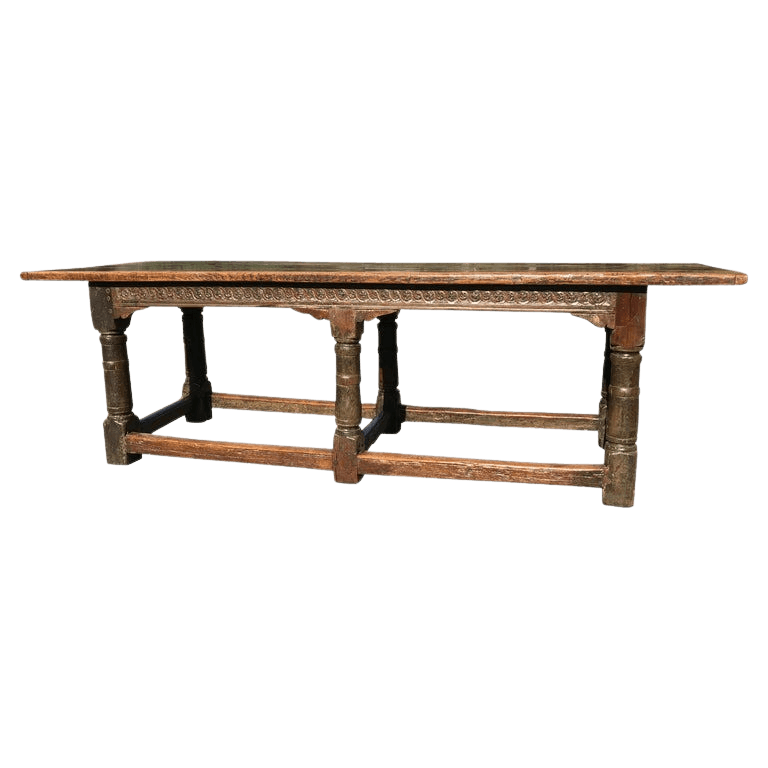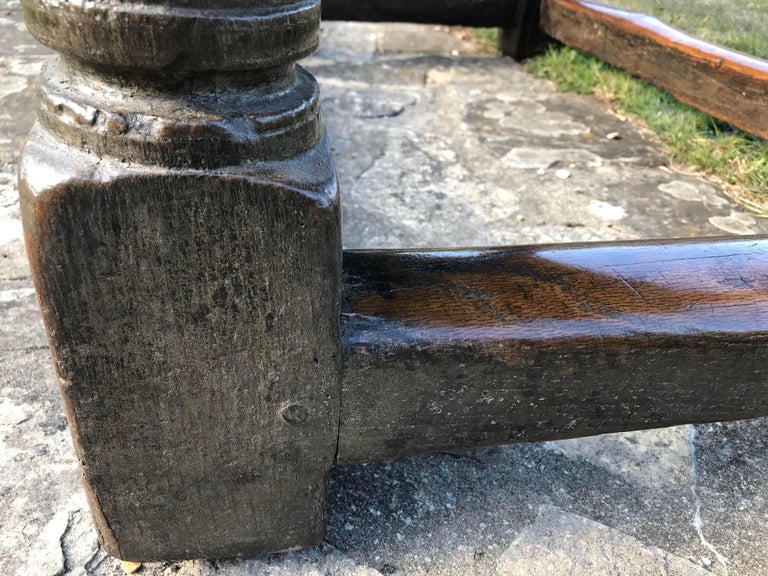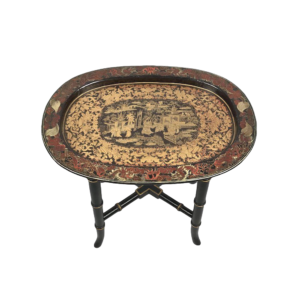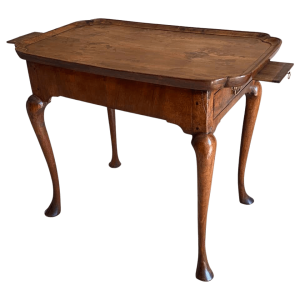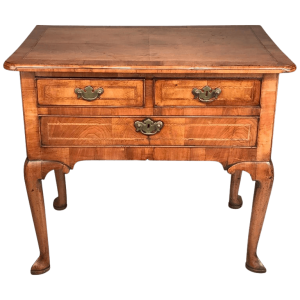Description
A rare 17th-century oak refectory table. Charles II-period, ca 1675.
The three-plank cleated detachable top is of superb colour, figuring and patination.
Raised on six baluster supports united by stretchers.
The frieze is guilloche-carved on all four sides – this demonstrates that this table can be free-standing. Many of these were only carved on three sides.
This versatile antique refectory table can be used as a hall table, dining table, serving table, or a wonderful kitchen table. A number of early oak pieces which we have sold have harmonised very well with modern interiors.
A similar-sized refectory table in generally poor condition sold for £17,000.00 (plus buyer’s premium) in Duke’s auctioneers’ ATHELHAMPTON HOUSE SALE, Puddletown, Dorset, UK, 9th Oct, 2019.
Nb. The turning of the supports on this English table indicates a development away from an earlier heavy carved bulbous leg, to a simpler baluster leg of the late-seventeenth century. However the guilloche-carved frieze is a hint of an earlier period.
Some historic restoration commensurate with some 350 years of use.
Literature:
R.W. Symonds, The Present State of Old English Furniture (1921) fig. 5, dated 1675. A very similar refectory table with strap carving.
Percy Macquoid, A History of English Furniture Vol. 1, The Age of Oak and The Age of Walnut, Antique Collector’s Club Ltd, Lawrence & Bullen Ltd. (1904) p. 208, fig. 177; ”An Oak Table. Property of the Duke of Devonshire”.
Percy Macquoid is notable as the first academic English furniture historian, and was co-author (with Ralph Edwards CBE FSA) of The Dictionary of English Furniture, Hamlyn, Fourth Impression 1972.
In England these large refectory tables gradually gave way to smaller tables suited to the more intimate domestic arrangements coming into fashion after The Restoration of Charles II in 1660.



